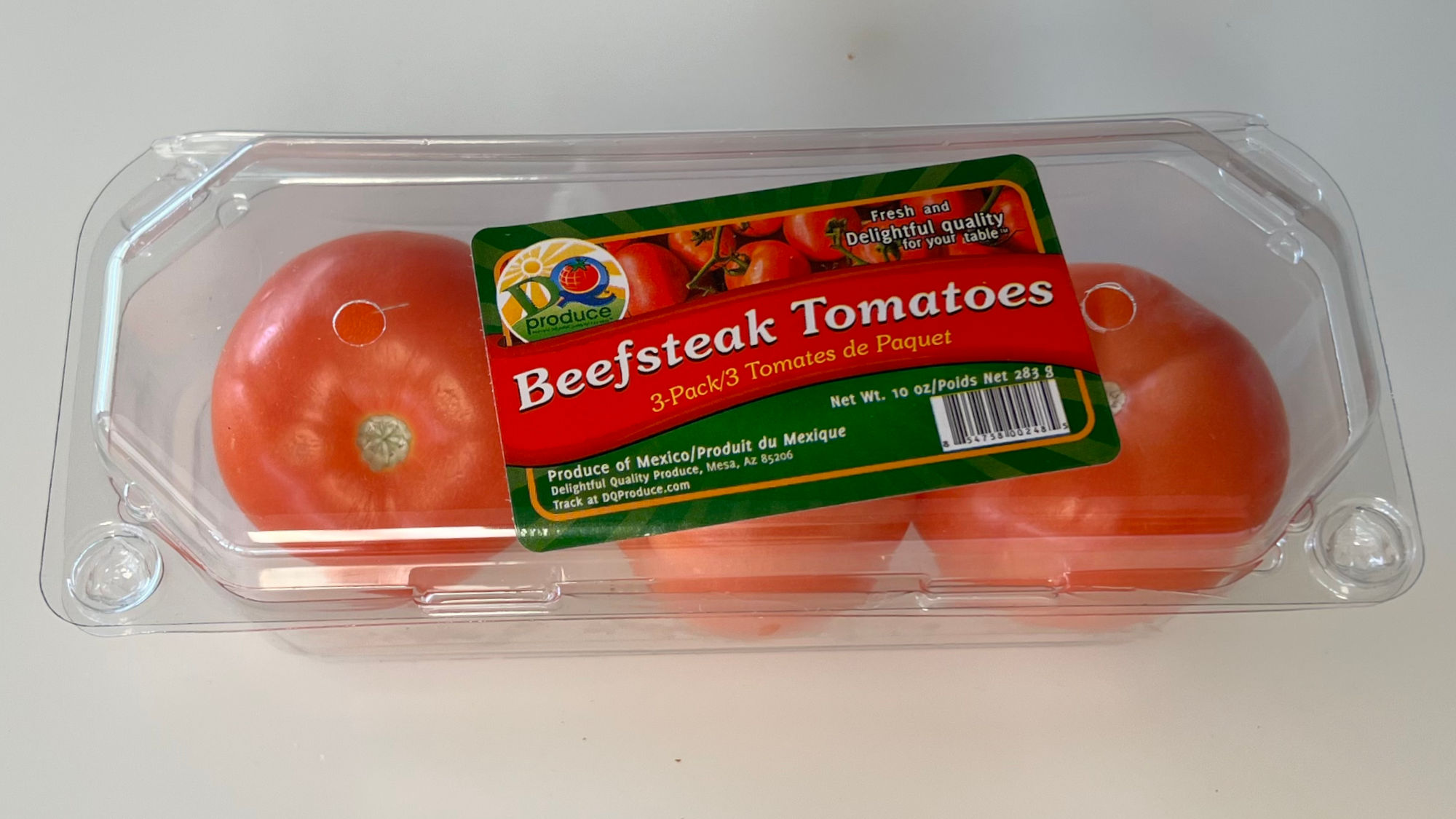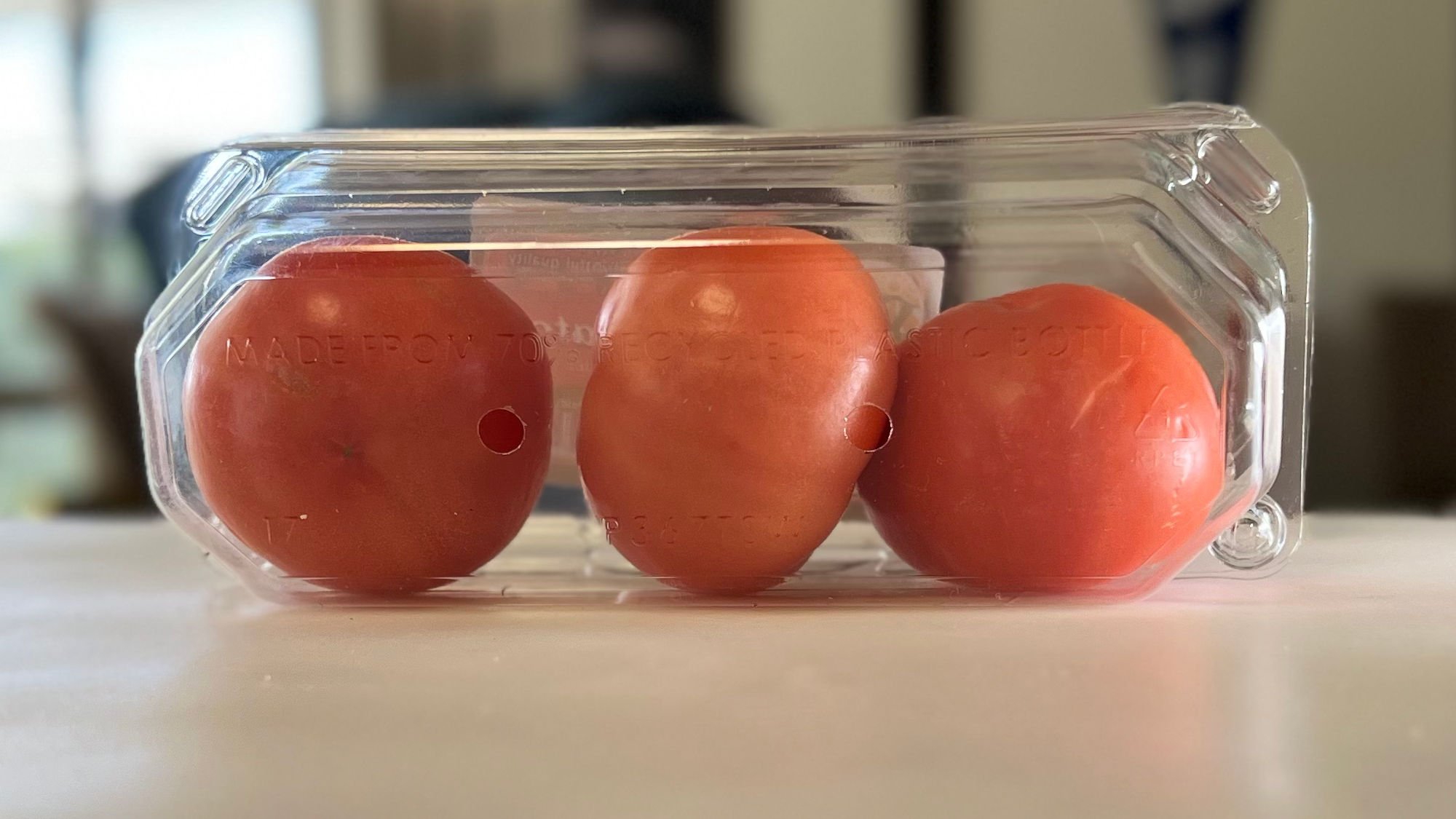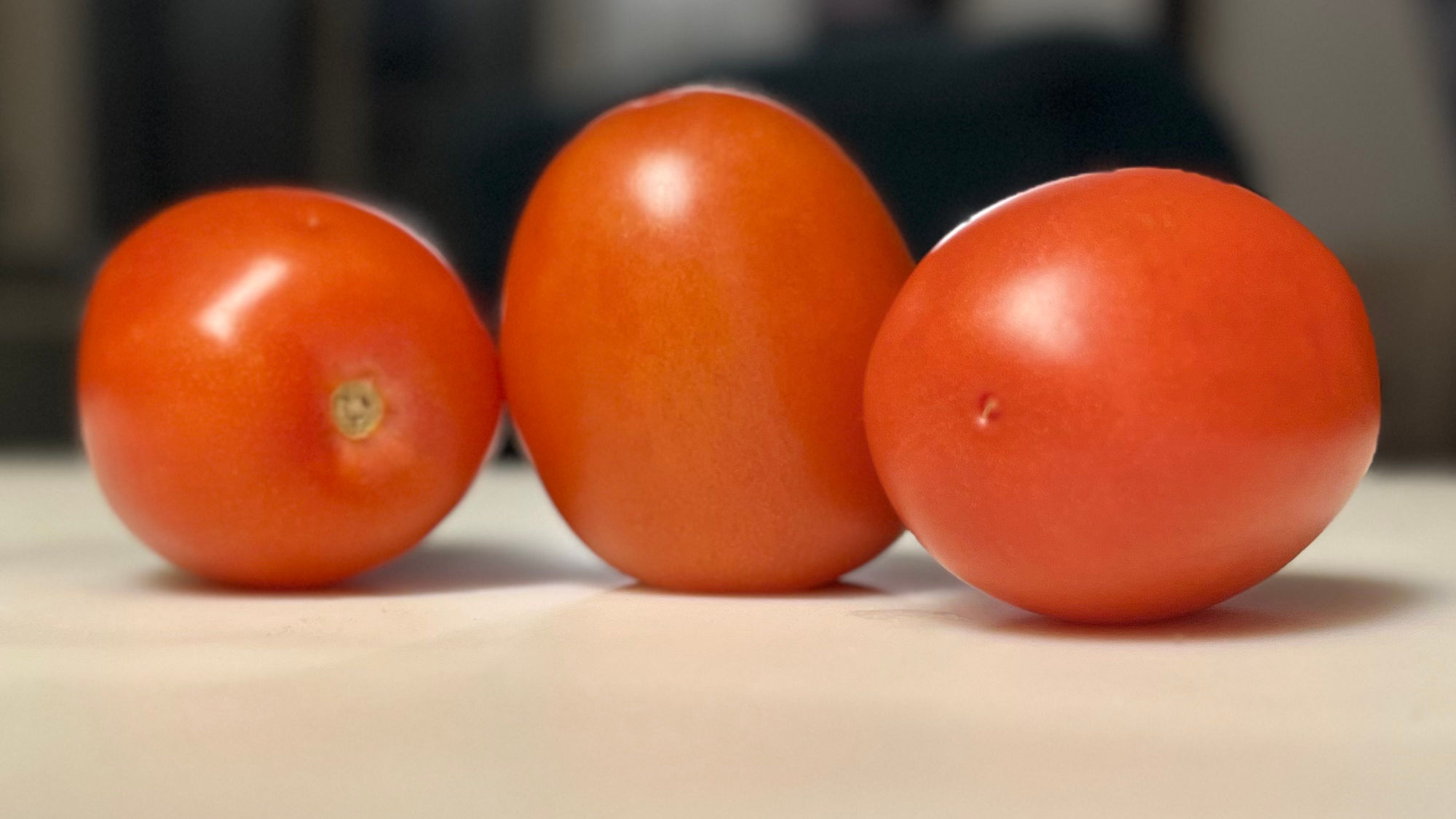Food Labels
Nutrition Facts
The plural form of tomato is tomatoes
Other plurals formed by adding -es to words ending with -o are echoes, torpedoes and vetoes.
Other plurals formed by adding -es to words ending with -o are echoes, torpedoes and vetoes.
Updated December 2024
Posted March 2023

Beefsteak Tomatoes

MAIN
35 IMAGES
Cheesy Tomato Chicken
Im-peck-able
| EAT LEVEL: |
eatlife.net/recipes/cheesy-tomato-chicken.php
MAIN
34 IMAGES
Marry Me Chicken
Can't Stop Chicken You Out
| EAT LEVEL: |
eatlife.net/recipes/marry-me-chicken.php
MAIN
25 IMAGES
Low Carb Cheesewiches
Relax, Take it Cheesy
| EAT LEVEL: |
eatlife.net/recipes/cheesewiches.php
TomatoesEtymology
The word tomato comes from the Spanish tomate, which in turn comes from the Nahuatl word tomatl meaning 'swelling fruit'; also 'fat water' or 'fat thing'. The native Mexican tomatillo is tomate. When Aztecs started to cultivate the fruit to be larger, sweeter and red, they called the new variety xitomatl ('plump with navel' or 'fat water with navel').
- They originated in western South America, Mexico, and Central America.
- The Aztecs used tomatoes in their cooking at the time of the Spanish conquest of the Aztec Empire.
- After the Spanish encountered the tomato for the first time after their contact with the Aztecs, they brought the plant to Europe, in a widespread transfer of plants known as the Columbian exchange.
- From there, the tomato was introduced to other parts of the European-colonized world during the 16th century.
- The earliest reference to tomatoes being grown in British North America is from 1710, when herbalist William Salmon reported seeing them in what is today South Carolina. They may have been introduced from the Caribbean.
- By the mid-18th century they were cultivated on some Carolina plantations and in general they were grown more as ornamental plants than as food.
- Thomas Jefferson, who ate tomatoes in Paris, sent some seeds back to America.
TomatoesTomatoes are fruits
They are botanically classified as berries. However they are commonly used culinarily as a vegetable ingredient. It is considered a "culinary vegetable" because it has a much lower sugar content than culinary fruits.
- Tomatoes are a significant source of umami flavor.
- Numerous varieties of the tomato plant are widely grown in temperate climates across the world, with greenhouses allowing for the production of tomatoes throughout all seasons of the year.
- Tomato plants typically grow to 3-10 feet high.
- They are vines that have a weak stem that sprawls and typically needs support.
- Tomato plants are perennials in their native habitat, but are cultivated as annuals.
- The size of the tomato varies according to the cultivar, with a range of 1/2-4 inches.
- A raw tomato is 95% water.
The heaviest tomato harvested weighed 7 lb 12 oz, was of the cultivar "Delicious", and was grown by Gordon Graham of Edmond, Oklahoma in 1986.
1g
NET
CARBS
CARBS
0g
ADDED
SUGARS
SUGARS
0g
TRANS
FAT
FAT
1mg
SODIUM
1% DV
0g
SAT FAT
0% DV
0mg
CHOLESTEROL
0% DV
Nutrition Facts
1 servings per container
Amount per serving
% Daily Value*
1 servings per container
Serving size
1 Slice (20g)
Amount per serving
Calories
3.6
% Daily Value*
| Total Fat 0g | 0.00% | |
| Saturated Fat 0g | 0.00% | |
| Trans Fat 0g | ||
| Cholesterol 0mg | 0.00% | |
| Sodium 1mg | 0.04% | |
| Total Carbohydrate 0.8g | 0.00% | |
| Dietary Fiber 0.2g | 0.00% | |
| Total Sugars 0.5g | ||
| Includes 0g Added Sugars | 0.00% | |
| Protein 0.2g | 0.00% |
| Vitamin D 0mcg | 0.00% |
| Calcium 2mg | 0.15% |
| Iron 0.1mg | 0.00% |
| Potassium 47mg | 1.00% |
*The % Daily Value (DV) tells you how much a nutrient in a serving of food contributes to a daily diet. 2,000 calories a day is used for general nutrition advice.
RAW TOMATO SLICE
1g
FIBER
0% DV
0g
PROTEIN
0% DV
CALCIUM
0% DV
IRON
0% DV
POTASSIUM
1% DV








